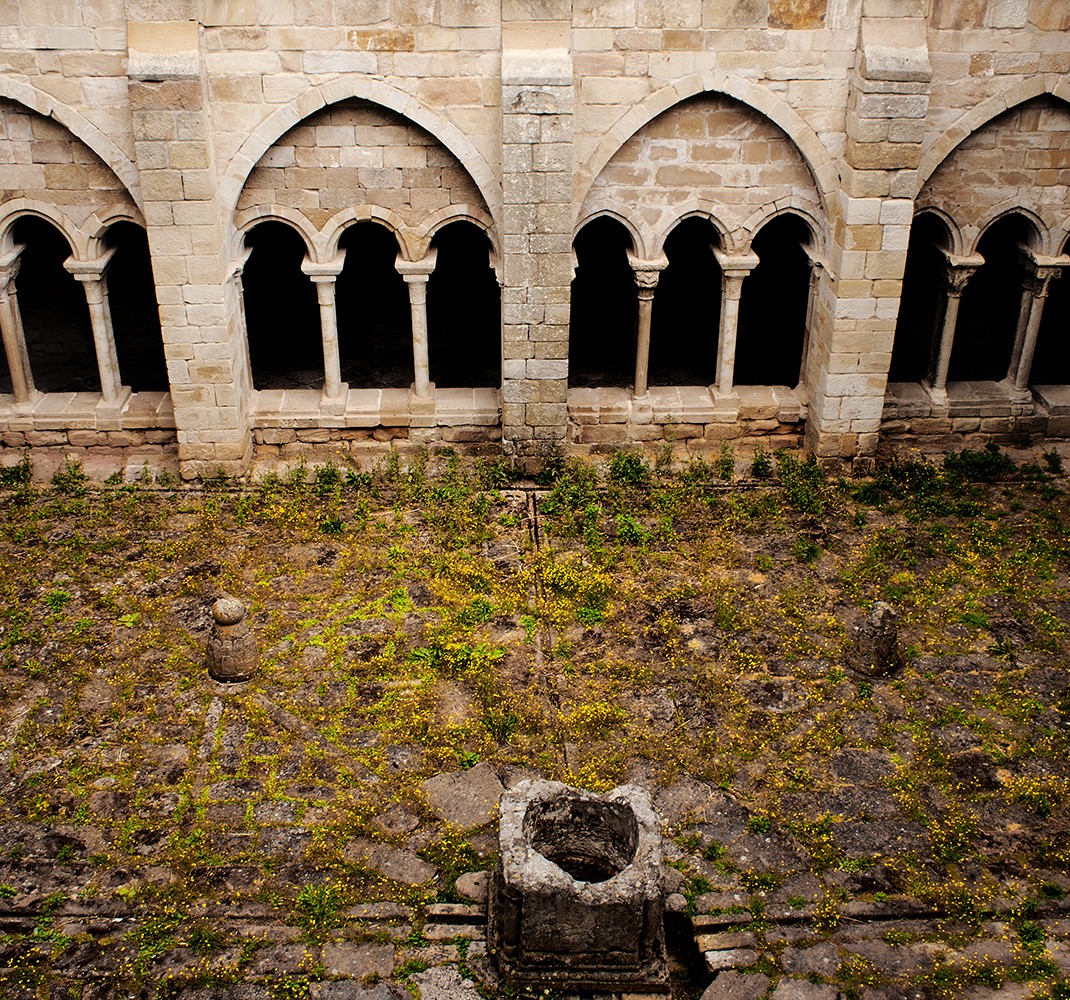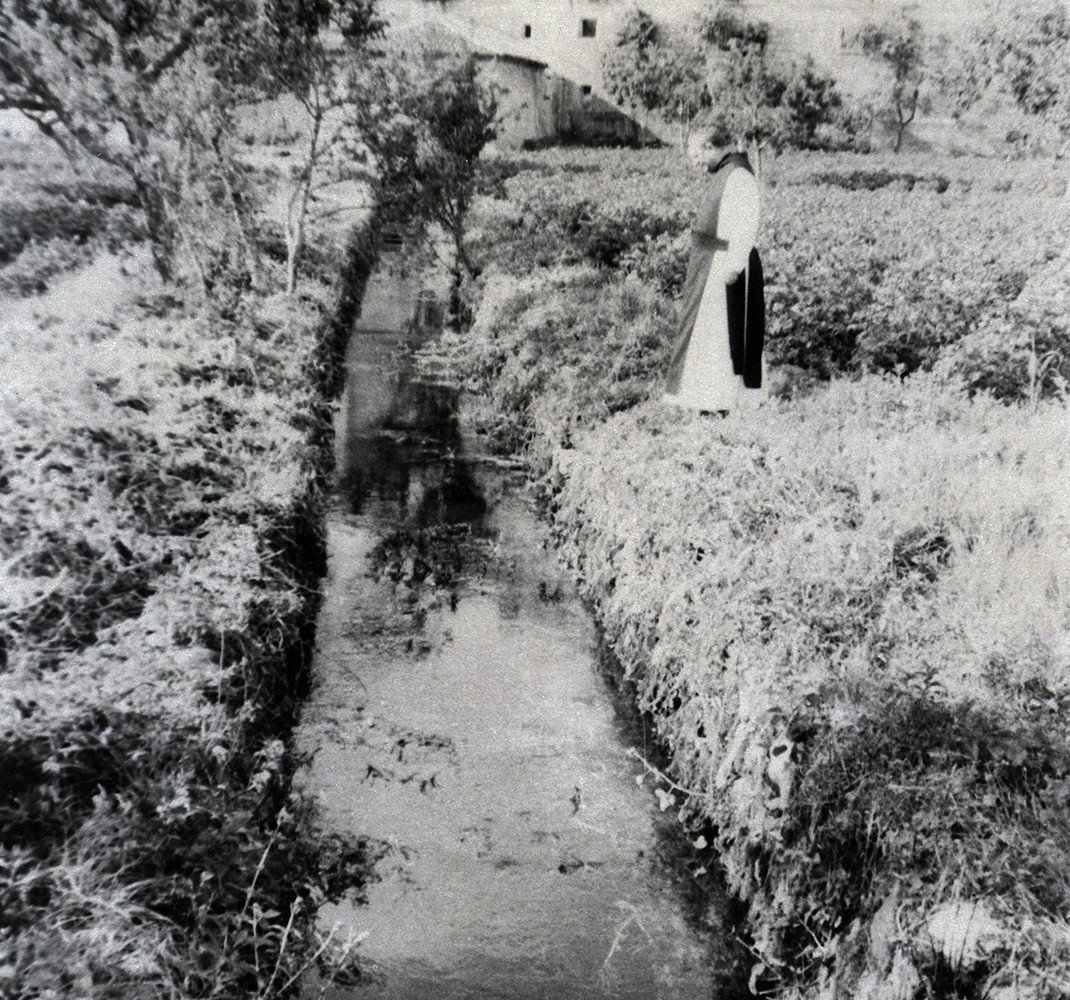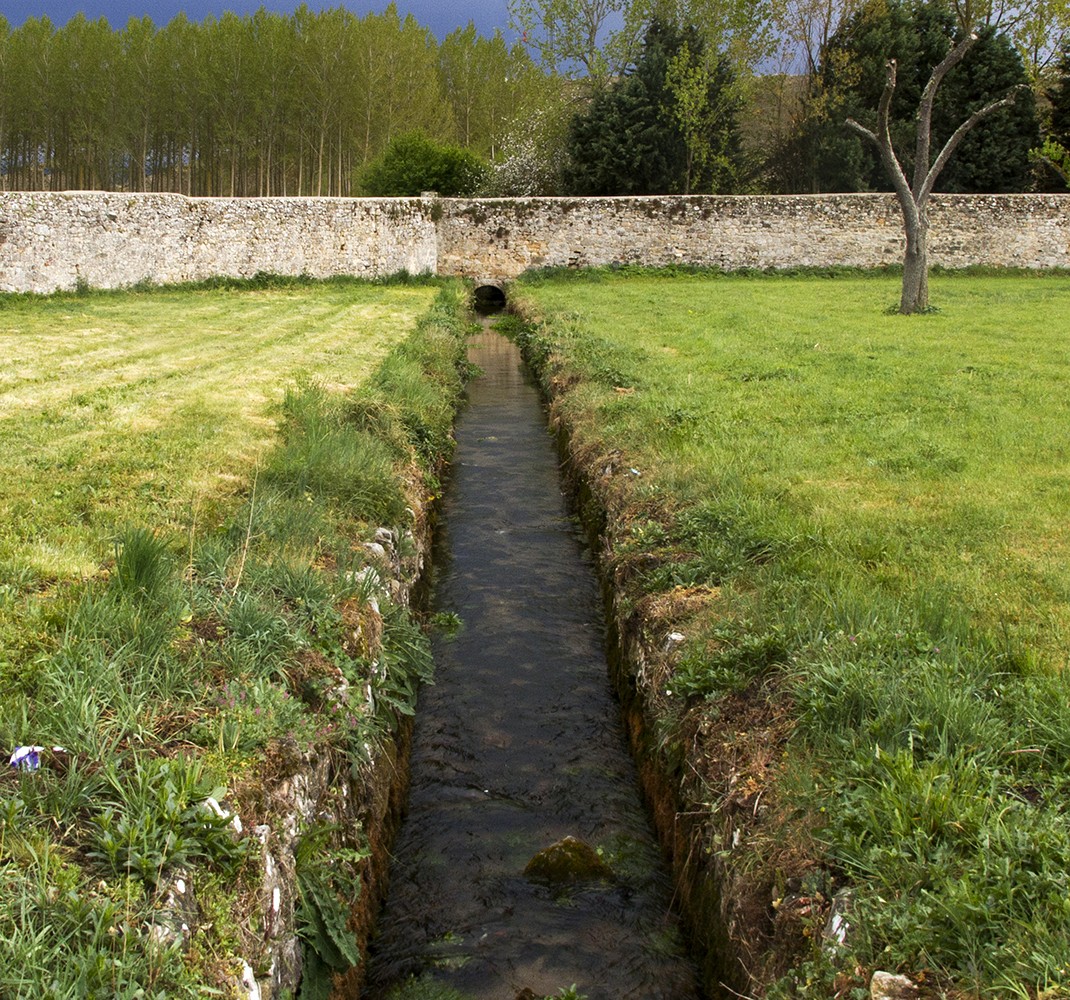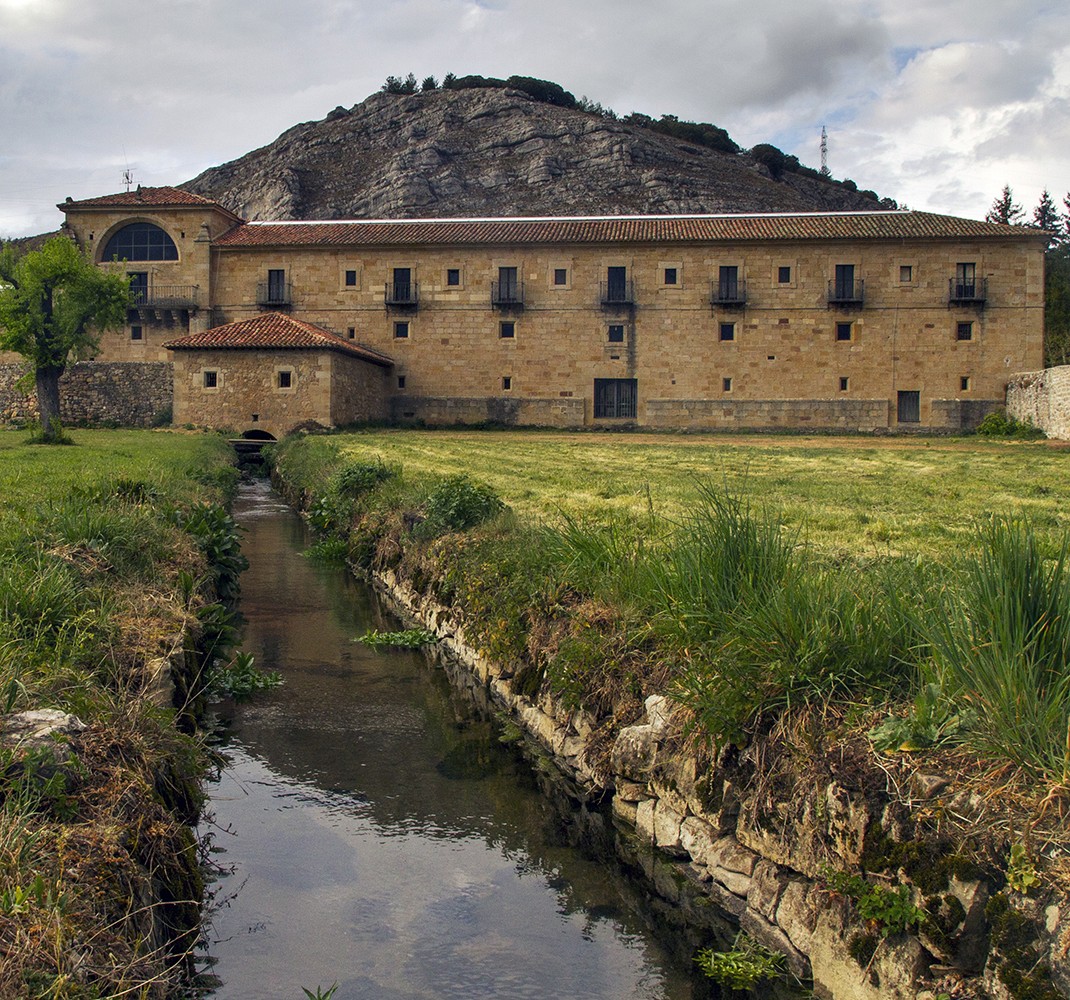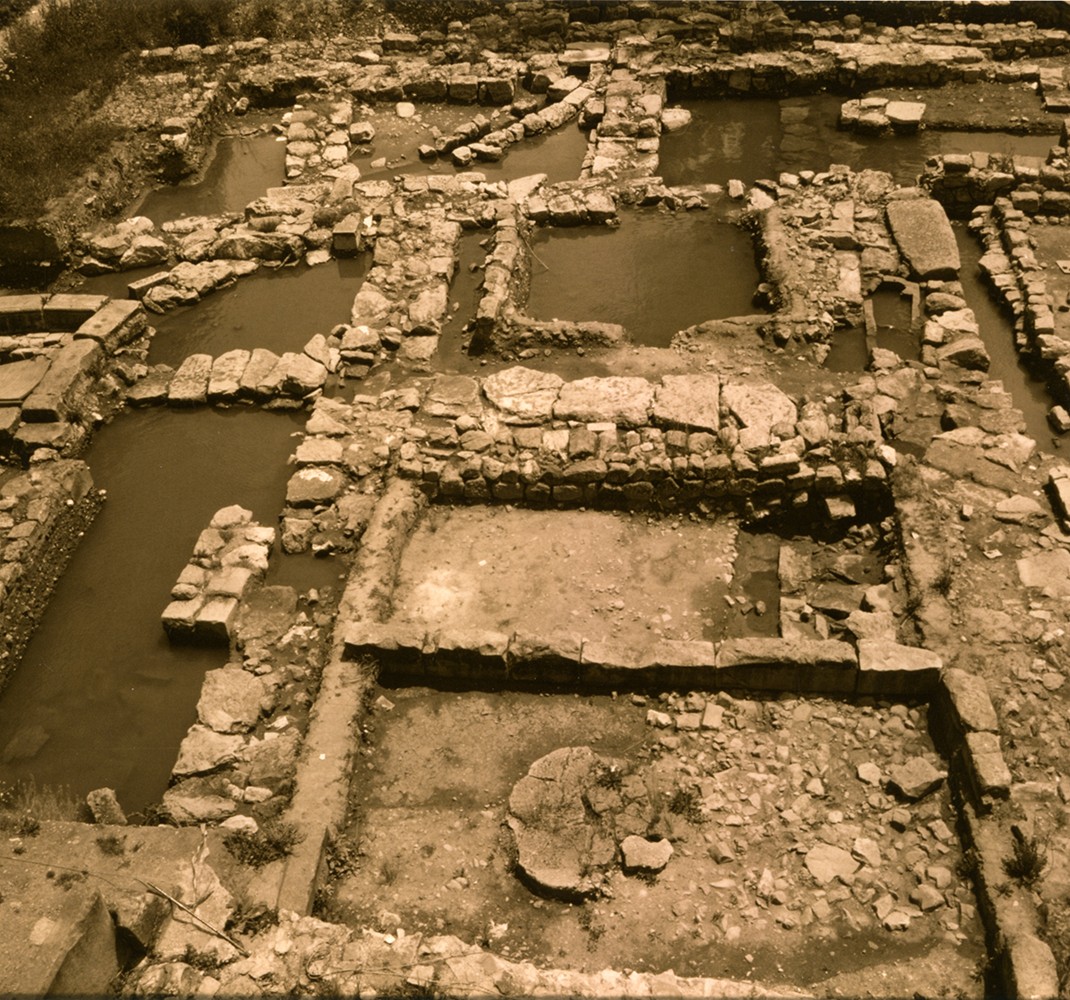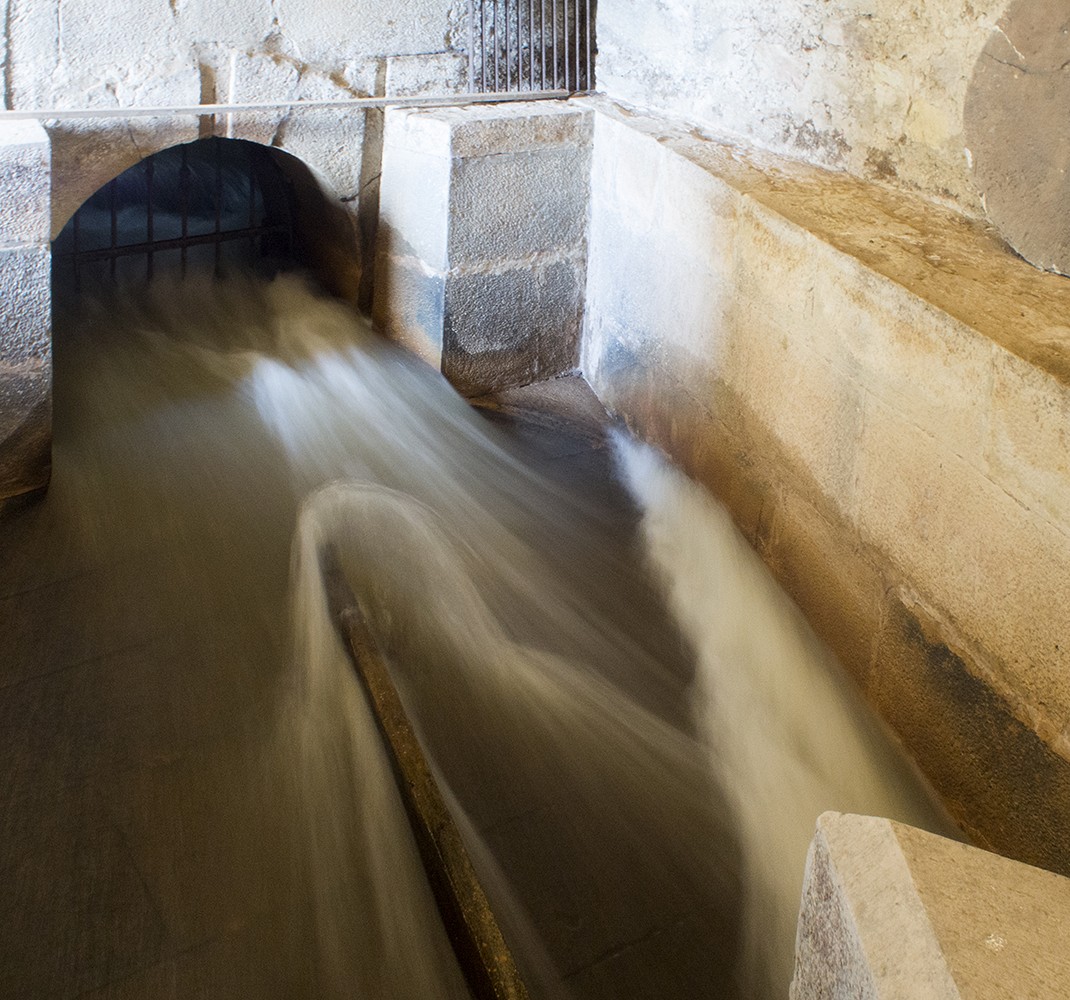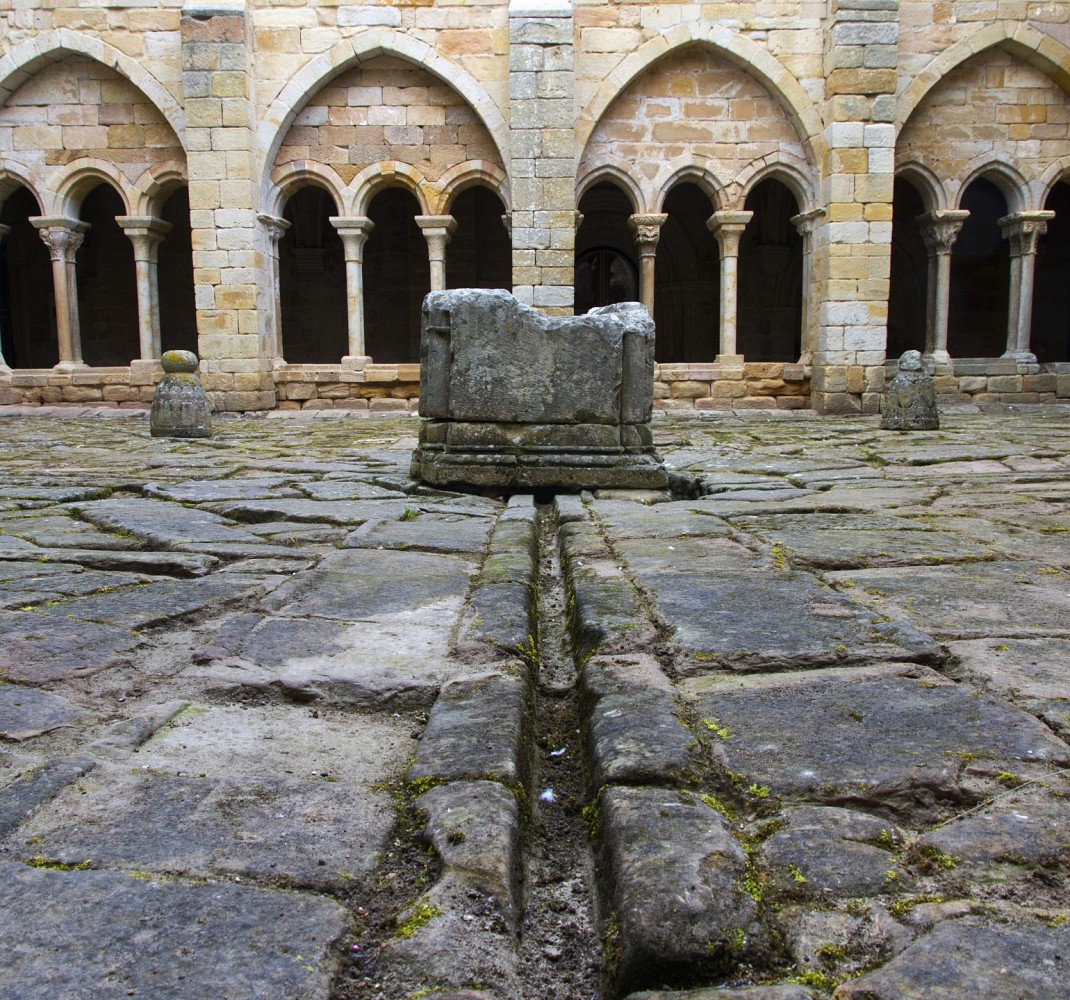The water that flows from the rock, the abundance of game, the forests and the lands that surrounded it, were the main reasons why Opila and Alpidio brothers, according to the legend, the founders of the monastery, decided to move to the area and start to build the building.
Water was an important point for the monastery and the monks who inhabited it. They used water to cook, wash, quench thirst and as a source of wealth because with it they operated the mill, which was used by the peasants of the territory after paying the corresponding tax. With regard to hygiene in the medieval monastery, this was very different from the current one, but not as scarce as has sometimes been said. The monks had to wash themselves daily, mainly before attending the Eucharist. Different is the theme of the bath, which were not so frequent. In some documents we read the obligation to bathe at least twice a year, before Christmas and Easter.
In this case, the well that we see inside the cloister is a form of sewerage, to eliminate all the water that both rain and thaw provided, because they had no need to accumulate.
They had water in different rooms, such as the kitchen or the abbot's chapel. In this last room you can see a fountain, where some shells appear. Here they collected water to wash the body of the monk who had died, and later it was transferred it to the cemetery for his burial. Locate this fountain and observe its beautiful decoration.

